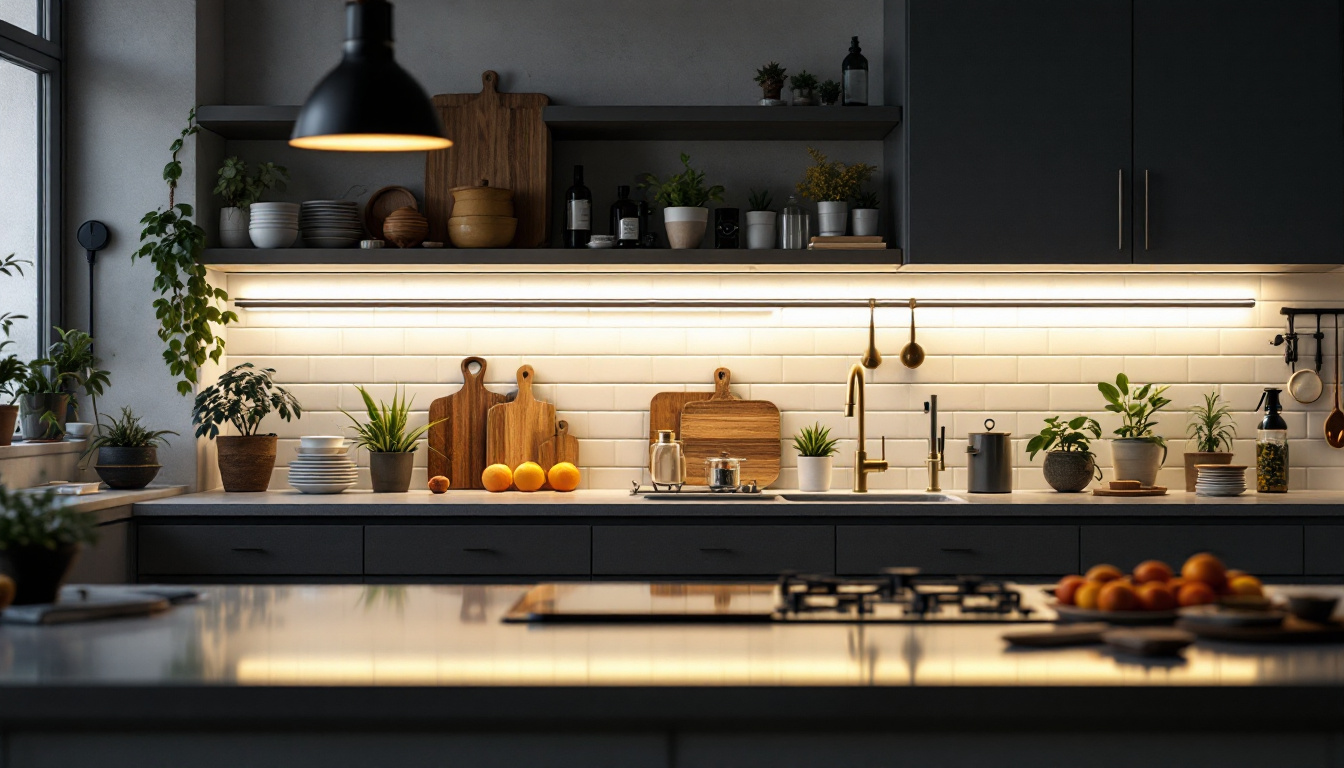
In the world of lighting, understanding the thermal impact of different light sources is crucial for contractors. As energy efficiency becomes increasingly important, the debate between natural light and electric lighting extends beyond aesthetics and functionality to encompass heat production. This article explores the nuances of heat generation from both natural and electric lighting, providing valuable insights for lighting contractors.
Every light source generates heat, but the amount varies significantly between natural light and electric lighting. Understanding the fundamental principles of heat production can help contractors make informed decisions when designing lighting systems.
Natural light, primarily derived from the sun, is often considered the most efficient source of illumination. During daylight hours, sunlight floods spaces, providing not only light but also warmth. However, the heat produced by natural light is largely dependent on several factors, including geographic location, time of year, and building orientation.
While sunlight can warm a space, it does so in a more indirect manner compared to electric lighting. The heat generated is often absorbed by surfaces such as walls and floors, which then radiate warmth into the environment. This passive heating effect can be beneficial in reducing heating costs during colder months, making natural light an excellent option for energy-conscious designs. Additionally, the strategic placement of windows and skylights can maximize the benefits of natural light, allowing for optimal solar gain while minimizing glare and overheating. architectural elements such as overhangs and shades can further enhance this effect, providing comfort and reducing reliance on artificial heating systems.
Electric lighting encompasses a wide range of technologies, including incandescent, fluorescent, and LED bulbs. Each type produces heat differently, which is a critical consideration for contractors. Incandescent bulbs, for instance, are notorious for their inefficiency, converting only about 10% of energy into light, while the rest is emitted as heat. This can significantly raise the temperature in enclosed spaces, leading to increased cooling costs in warmer months.
On the other hand, LED technology has revolutionized electric lighting by producing significantly less heat. LEDs convert a higher percentage of energy into light, resulting in lower heat output. This energy efficiency not only reduces cooling costs but also extends the lifespan of the lighting fixtures, making them a preferred choice for modern installations. Furthermore, the reduced heat output of LEDs allows for more versatile applications in various environments, including sensitive areas such as art galleries and museums, where temperature control is crucial for preserving artworks and artifacts. As the industry continues to innovate, the development of smart lighting systems that integrate with building management systems is becoming increasingly common, allowing for real-time monitoring and adjustments that can further optimize energy use and heat production in lighting systems.
When comparing natural light and electric lighting, it’s essential to consider the context in which they are used. Each has its advantages and disadvantages regarding heat production, and understanding these can help contractors make better choices for their projects.
Natural light, while free and abundant, can lead to overheating in spaces with large windows or inadequate shading. In contrast, electric lighting can be controlled more precisely, allowing for better management of heat output. For instance, using dimmers or smart lighting systems can help regulate the amount of heat generated by electric lights.
In terms of heat output, incandescent bulbs produce the most heat, followed by fluorescent lights, with LEDs being the least heat-intensive. This hierarchy is crucial for contractors when considering the thermal dynamics of a space. In environments where temperature control is critical, such as data centers or laboratories, the choice of lighting can have a significant impact on overall energy efficiency. Additionally, the thermal load from lighting can affect cooling requirements, necessitating a more robust HVAC system to maintain optimal conditions.
The choice between natural and electric lighting also influences building design. Structures designed to maximize natural light often incorporate features such as skylights, large windows, and reflective surfaces to enhance daylighting. These elements not only reduce reliance on electric lighting but also contribute to passive heating, which can be a significant advantage in energy-efficient building design. Moreover, integrating natural light can improve occupant well-being and productivity, as studies have shown that exposure to natural light can enhance mood and cognitive function.
Conversely, buildings that rely heavily on electric lighting may require additional insulation or HVAC systems to manage the heat generated by lighting fixtures. This can lead to increased construction costs and ongoing energy expenses. Furthermore, the placement of electric lighting can also dictate the layout of workspaces, potentially leading to a less flexible design. Therefore, the decision regarding lighting sources should be made with a comprehensive understanding of the building’s thermal dynamics. Contractors must also consider the long-term implications of their choices, including maintenance costs and the potential for retrofitting as energy standards evolve.
For lighting contractors, managing heat production is essential for creating comfortable and energy-efficient spaces. Implementing effective strategies can help mitigate the heat generated by both natural and electric lighting.
To maximize the benefits of natural light while minimizing heat buildup, contractors should consider the following strategies:
By implementing these strategies, contractors can harness the benefits of natural light without compromising indoor comfort. Additionally, integrating light tubes or skylights can further enhance the distribution of natural light into deeper areas of a building. These features not only brighten spaces but can also reduce reliance on artificial lighting during daylight hours, contributing to lower energy costs and a reduced carbon footprint.
For electric lighting, several approaches can be taken to minimize heat output:
These methods not only improve energy efficiency but also enhance the overall performance of lighting systems. Furthermore, considering the use of fixtures with built-in heat sinks can effectively dissipate heat away from the light source, maintaining a cooler environment. This is particularly beneficial in commercial settings where lighting is frequently used for extended periods, as it helps to prolong the lifespan of the fixtures while ensuring that the ambient temperature remains comfortable for occupants.
The lighting industry is continually evolving, with new technologies emerging that promise to further reduce heat production while enhancing illumination. Staying informed about these trends can help contractors remain competitive and provide the best solutions for their clients.
LED technology is advancing rapidly, with innovations aimed at improving efficiency and reducing heat output even further. New designs are focusing on better thermal management, allowing LEDs to operate cooler without sacrificing light quality. This is particularly important in applications where heat generation is a concern, such as in retail spaces or museums where artifacts must be protected from heat damage. Furthermore, the development of new materials and heat sinks is enabling manufacturers to create more compact LED fixtures that can be used in a wider range of applications, from residential to commercial settings. As these technologies continue to evolve, we can expect to see LEDs that not only last longer but also provide a more consistent and higher quality light output, enhancing the overall aesthetic of any space.
Smart lighting systems are becoming increasingly popular, offering enhanced control over both light output and heat generation. These systems can be programmed to adjust based on occupancy, time of day, or even ambient light levels, ensuring that energy is used only when needed. By integrating smart technology into lighting designs, contractors can provide clients with solutions that are not only energy-efficient but also responsive to their needs. Additionally, the integration of IoT (Internet of Things) capabilities allows for remote monitoring and management of lighting systems, enabling users to track energy consumption and make adjustments from anywhere. This level of control not only contributes to energy savings but also enhances user comfort and convenience, making smart lighting a desirable feature in modern building design.
In conclusion, understanding the heat production of natural and electric lighting is essential for lighting contractors. Each type of lighting has its unique advantages and challenges, and the choice between them should be made based on the specific needs of the project.
By embracing a holistic approach that considers heat management, energy efficiency, and the evolving landscape of lighting technology, contractors can create spaces that are not only well-lit but also comfortable and sustainable. As the industry continues to evolve, staying informed and adaptable will be key to success in the field of lighting design.
As you consider the balance between heat production and lighting efficiency for your next project, remember that LumenWholesale is here to support you with premium, spec-grade lighting solutions. Our extensive selection of high-quality lighting products is designed to meet the highest industry standards, ensuring you deliver reliable and sustainable lighting designs. With unbeatable wholesale prices, free shipping on bulk orders, and no middleman markups, you can provide your clients with the best value in lighting. Elevate your lighting game and discover the superior value of wholesale lighting with LumenWholesale today.

Discover the transformative impact of under-the-counter lighting on home safety.

Discover innovative strategies to future-proof your lighting projects with Floodlight Garage.

Discover the transformative power of sunlight strips in lighting installation projects.

Discover the essential insights every lighting contractor needs to know about LED ceiling lights.